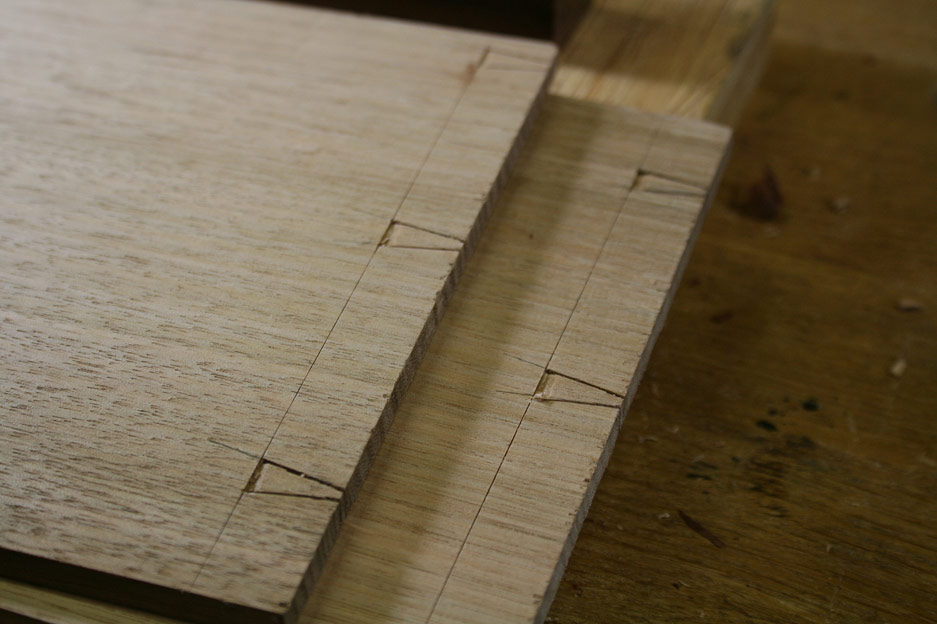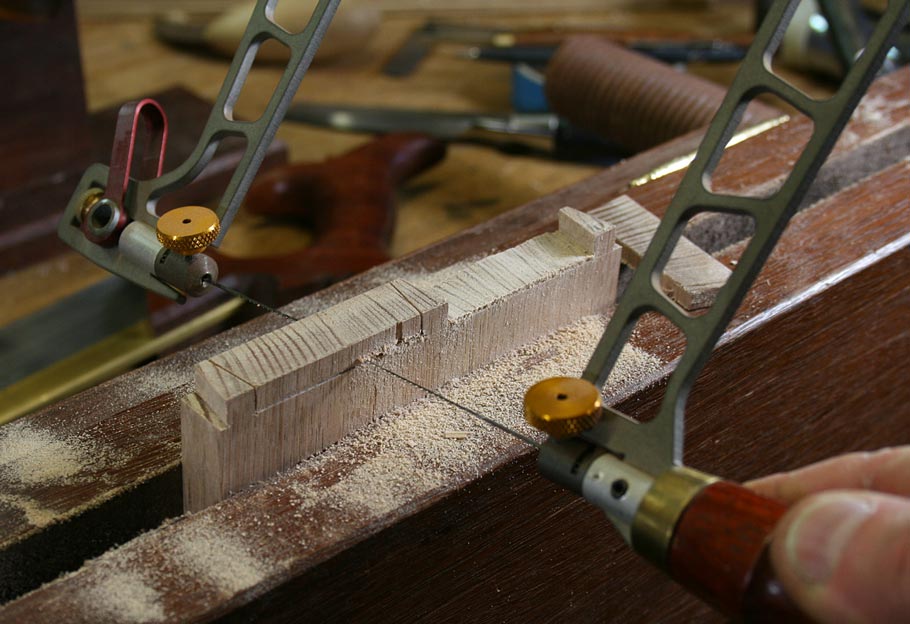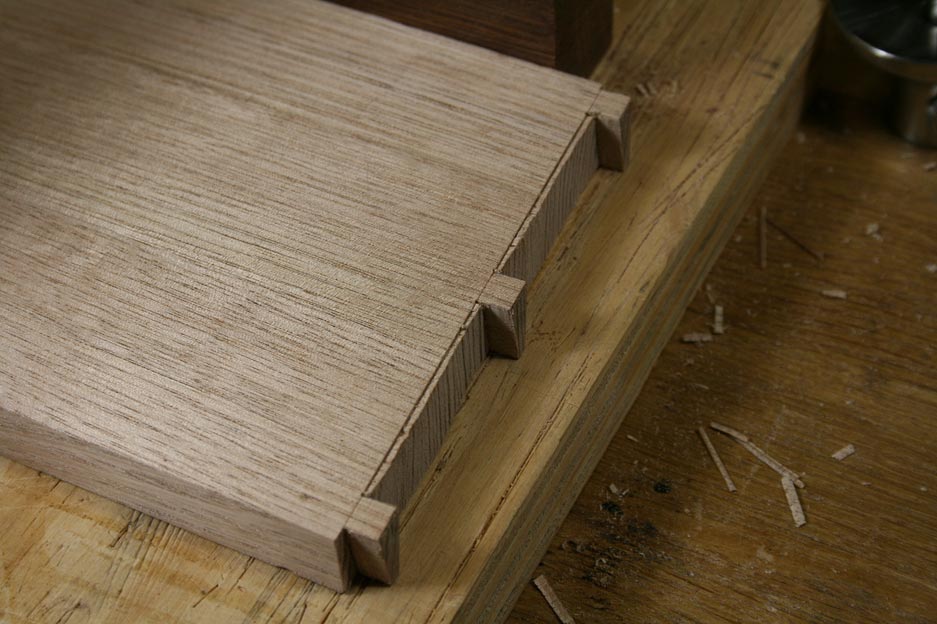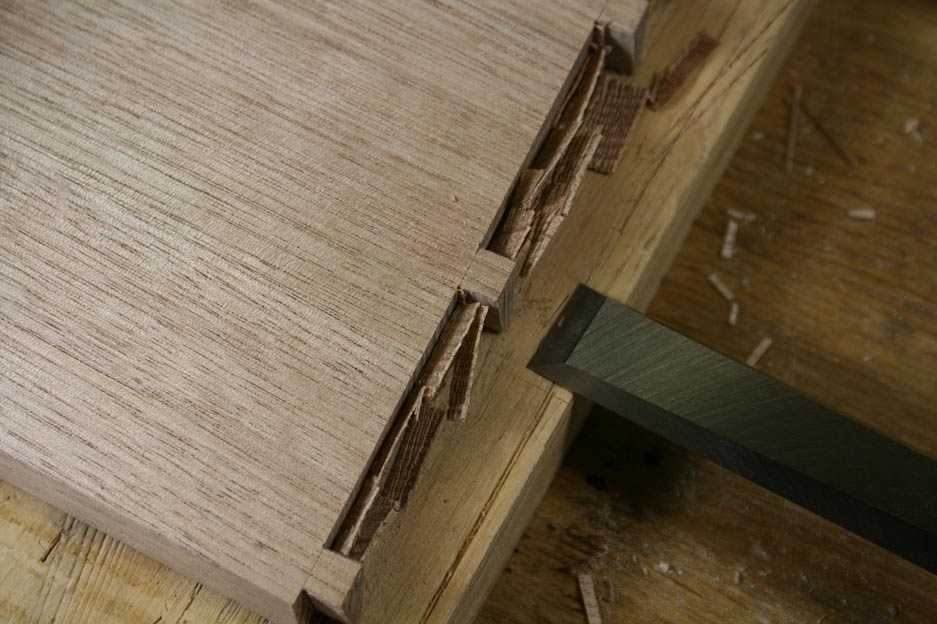At the weekend I cut some dovetails and sawed off the shoulders. It is of course conventional to pare them down after sawing. I always cut the shoulder lines with a bit of depth so as to have the shiny edge to help with the paring. As we all know, the idea is to bring any scruffy bits above the shiny lines down to the same level. David Charlesworth covers the technique for this quite precisely in his DVD on the subject ("Feel for horizontal, lay the tip on the line" etc.) and of course his ideas work as you would expect.
I've stumbled on a variant to this in a fit of absent-mindedness: I put a small square in the behind the joint as a vertical reference for the back of my normal chisel and lightly tapped to the middle of the shoulder and than did the same from the other side and checking with the square showed results as good as Mr C's. I'm putting this here for comment as I can't recall having seen it recommended anywhere (although I'm sure it can't be anything new) and because it proved to be a quick, easy and reliable method. it would of course, also work for tenons.
Any thoughts?
I've stumbled on a variant to this in a fit of absent-mindedness: I put a small square in the behind the joint as a vertical reference for the back of my normal chisel and lightly tapped to the middle of the shoulder and than did the same from the other side and checking with the square showed results as good as Mr C's. I'm putting this here for comment as I can't recall having seen it recommended anywhere (although I'm sure it can't be anything new) and because it proved to be a quick, easy and reliable method. it would of course, also work for tenons.
Any thoughts?




































